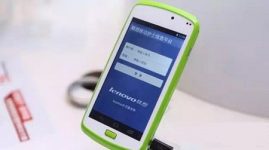
Lenovo PDA assists the construction of smart medical care in 306 Hospital
[ad_1]
Customer Information
The 306th Hospital of the People’s Liberation Army is a comprehensive tertiary first-class hospital with 1,008 beds and 44 departments; it now has 3 fully-functional ward buildings, with 1,800 outpatient visits per day and 10,000 patient visits per year. The average bed utilization rate is 90%, and it is also the first batch of “basic medical insurance designated hospitals” in Beijing.

Project background & demand analysis
Due to the dual identities of 306 Hospital as a “comprehensive tertiary first-class hospital” and a “basic medical insurance designated hospital”, a large number of patients come to see a doctor every day, and there are not a few patients who need to be hospitalized for observation. This puts forward very high requirements for the nurses in the inpatient department. Each nurse needs to be responsible for the physical sign detection and medication infusion of more than ten patients. This work is extremely complicated and trivial to operate. The current demand of 306 Hospital is to reduce the workload of nurses through mobile internet technology, improve service quality, and eliminate nursing errors and accidents.
Faced with the situation that the supply of medical resources is less than demand, Lenovo has been working hard to optimize the medical process through information technology. Today, the editor brings you a product that has actually landed-the mobile nursing PDA. Let’s take a look at the smart medical care depicted by this exclusive “mobile phone” for nurses!
Solution-the exclusive “mobile phone” for nurses
Recently, 306 Hospital equipped the nurses in the inpatient department with an exclusive “mobile phone”-a medical PDA (Personal Digital Assistant) designed and developed by Lenovo, a “tablet computer” specially customized for the medical industry.
In addition to mobile office like a tablet computer, this PDA can also help nurses do two very important things: scan one-dimensional code/two-dimensional code, and readRFID. Nurses can instantly obtain all patient information and detailed usage of medicines from the back-end database by scanning the code. With the application of RFID technology, nurses can obtain the patient’s physical information, the execution of medical orders, etc. in real time and enter them into the database. This approach is indeed “win-win-win”: patients will not “take the wrong medicine”, nurses no longer rush to count the wrong numbers, and the hospital can understand the execution of doctors’ orders.
Mobile nursing PDA is an emerging hot spot in the mobile medical field. So what are the advantages of Lenovo’s PDA? First, the hardware level, the quality of Lenovo products needless to say, Intel CPU, high-definition IPS screen, 300 hours of long standby, twice as long as The performance of competing products also supports alcohol disinfection; the second is the level of service, Lenovo’s service team is the strongest in the country; the third is the cost, and the price of tens of thousands of yuan has become approachable under Lenovo’s strong supply chain system. That’s it. At the same time, Lenovo has also created a mobile medical solution based on PDAs, allowing small PDAs to play the greatest role.

Features
And how can a “mobile phone” with such excellent hardware lack software support? Lenovo has also adapted this mobile care PDA to a mobile medical solution developed by an excellent ISV. Through the solution, PDA can perform more functions, such as bed management, doctor’s order execution, patient education, department message center, nursing record management, nurse education, nursing information, nurse scheduling, etc.
These functions can greatly save more time for nurses to take care of patients. Relying on the hospital’s information system, giving full play to the advantages of wireless technology, building a “mobile point of care” is the focus and key to the application of mobile care technology in the medical industry. On the basis of the existing information system, the “mobile point of care” has both mobility and flexibility, enabling medical institutions to achieve a high degree of sharing and effective use of medical equipment and medical information.

Customer benefits
Provide medical security: avoid secondary input and reduce medical risks caused by inputting wrong medical record information;
Improve work efficiency: real-time input of patient physical information during ward rounds, access to patient information at any time, to help nurses complete nursing and ward rounds more accurately;
Reduce the cost of use: PDA nursing machine replaces the original trolley + notebook computer equipment combination, which greatly reduces equipment costs and brings unprecedented mobile medical service user experience;
Improve management efficiency: Real-time record of data generated by medical staff during ward rounds, provide first-hand information in follow-up performance appraisal, work supervision, etc., and provide decision-making basis for hospital management.
[ad_2]


